Why You Should Get a Fixed Blade for Your Next Adventure
Fixed vs Folder
Folders are cool, fidgety, easy to carry, and more socially acceptable. However, compared to fixed blades they are also more complex, not as tough, and often smaller and more expensive. Plus there is always a chance for a lock malfunction, which can have disastrous consequences (especially in a wild remote area). So when your long-term sustainability depends on a knife, there’s simply no substitute for a good fixed blade. For real bushcrafting, hunting, extended hiking, etc. an appropriate fixed blade is the preferred option.
The most common use for a knife on any trip is food preparation, of course. A good kitchen-oriented folder could do the job (like the Spyderco SpydieChef) but a 4-5 inch fixed knife in a kitchen would work even better. Also, cleaning up a knife in the wild after filleting a fish, skinning game, or other messy food prep is much easier with the construction of a fixed blade.
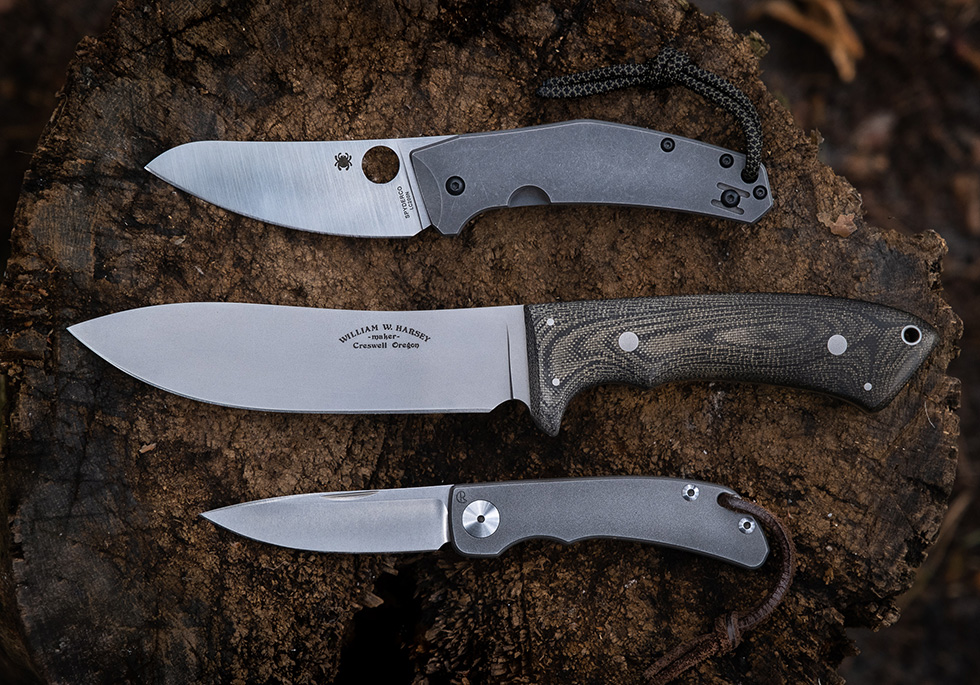
The same applies to most camp jobs or bushcrafting – whittling, making feather-sticks, crafting simple camp tools, drilling holes in wood, etc. are all faster and easier with a good sharp fixed blade. And finally, heavy camp work like chopping branches, batoning and splitting wood, starting a campfire – for that, a seriously sized fixed blade is simply essential; there is no other way (except an axe, but that’s another story). There’s a reason why so-called ’camp knives’ are fixed blades only, so there are multiple reasons why fixed blades are still being used as the tool of choice by many outdoorsmen and survivalists. Take a good fixed blade, combine it with a multitool or Swiss Army Knife and you’re ready for any adventure!
However, it is also important to choose a proper knife for the job or the adventure. Survival in Alaska, thru-hiking the Appalachian Trail, or a mountain stream fishing trip – all are defined by different priorities and require totally different approaches. So below you’ll find a quick split of fixed blades by category, and my own (and subjective) list of my favorite models. But don’t worry, I’ve included some budget options too; you don’t always need a knife that costs an arm and a leg.

Neck Knives & Personal Knives
If you’re new to edged tools, a neck knife is a small fixed blade carried in a sheath hanging off your neck – pretty much like a necklace. It’s one of the oldest ways to carry a small personal knife, popular among bushcrafters, survivalists, and trappers. There are several advantages – it’s easily accessible, easy to deploy, can be worn outside a coat or jacket (even during winter), plus it’s rather hard to lose. It’s also a great carry system for backpackers since any kind of belt knife would feel very uncomfortable under a hip belt. Carrying a knife in/on a pack is only partially a solution, as you may end up separated from your knife if you need to drop a pack in an emergency or survival situation.

My preferred size in this category varies between 2.5″ and 3.5″ blades (smaller knives are usually useless for outdoor use). To bring the weight down neck knives often have skeletonized handles. Of course, full scales vastly enhance grip performance – so you need to try for yourself to find your preference. Some knives in this category are designed to be worn on a belt in a dedicated compact sheath, and these knives are often called PSK – Personal Survival Knives. They are small in size, so can always be on you, but are capable of really hard work in the field. It’s a group of knives that are tailor-made for hikers and mountaineers – and they often perform above their size and can be used comfortably for an extended period – something I can’t always say about skeletonized knives.

General Use Outdoor Knives
When you think of an “outdoor knife” there’s a good chance you’d imagine something belonging exactly to this group. Most classic-looking knives with blades between 3.5 and 5.5 inches fall into this category. That’s an extremely crowded group and it’s for a good reason. Such a knife has a considerable advantage over any folder thanks to size, weight, and strength. It’s a classic fixed blade – big enough for any job; general cutting, whittling, food preparation, cleaning game, and often also hard use like batoning, wood splitting, or even light chopping. But they are also small enough to be carried during a whole day in the wild. Pair it with a small multitool and a folding saw and that’s all you need for any wilderness adventure.
It’s also the most versatile blade size – if you want just one knife in your kit, it should be in this category. But these are usually also heavier than folders or neck knives, so keep that in mind when packing for an ultralight thru-hike or mountaineering trip.

Camp Knives
This is a very specialized segment, where knives can even substitute a hatchet. Chopping, batoning, heavy cutting, etc. – this is a knife that is used for any job around the camp. Per definition, these knives can be used hard and abused in the field. I’d not carry such a blade on a hike, of course – this is a tool best suited for overlanding, expeditions, horse riding adventures, or simply stationary camping. Honestly, I can’t imagine summer camping without a serious camp knife on my belt. These are the toughest knives of them all. If a camp knife is not enough for you… you need a full-size machete or an axe.

Sheaths
The sheath is an essential part of every fixed blade. There are basically two sheath materials, which divide the outdoor scene in half: leather and Kydex. There’s also Cordura and nylon, but both are more used in military applications.
Leather is an obvious choice for traditional knives like a puukko or leuku, and also for a lot of hunting knives. However, Kydex has some advantages as a sheath material. First of all, it is tougher and generally more secure. It doesn’t need any extra straps or fasteners to keep a knife in place so allows for easier and faster deployment. It dries faster, doesn’t absorb water, always keeps shape, and usually offers sheath modularity. It’s also easier to change carry systems on a Kydex sheath, add a firestarter loop, or clean it if needed. And last but not least it’s lighter too.
For me, Kydex is an almost perfect sheath material for an outdoor knife. However, you should be careful when exposing it to direct sunlight, especially in a car – it can get so hot that it can start losing its shape, and there’s usually no way to repair such damage.
And leather? A well-made leather sheath can be almost as effective as Kydex and with proper care it will outlast the owner. Also, I can’t even imagine carrying a traditional wooden-handled knife in a Kydex sheath. So yeah, leather still has its place in knifemaking, especially in classic knives.

Another point to consider is the sheath attachment system – when backpacking a bigger knife is usually on a pack so plan carefully how you’d carry your fixed blade. Sometimes it requires ordering additional attachment accessories. Or making an extra sheath, as I did with my modern micarta handled puukko by Pawel Michalski pictured below, attached to my pack in a custom Kydex sheath.

Recommendations
Below are some examples of the fixed blade knives that I recommend. All budgets, all sizes – it’s all in there listed from the smallest to the largest:
GiantMouse GMF1 ($125)

A compact neck knife with a serious punch. It’s small, but thanks to a high flat grind and awesome ergonomics it’s still a capable knife. If I needed to go really ultralight, this one would be my bare minimum as far as size is concerned. It’s so light you can easily carry it under a t-shirt the whole day. And still, it can do the job.
Morakniv Eldris ($35)

Small but stout. For safe carry as a neck knife, I’d suggest either the upgraded Mora sheath with leather retaining strap, or better yet make a small dedicated Kydex sheath for it. This is a true woodsman’s helper in the wilderness. Thanks to a super comfortable (but bulky) grip, Scandi grind, and 90-degree sharp spine it’s a great fire-starting knife if combined with a ferrocerium rod. It cuts, whittles, and scrapes. And it can be easily carried in a coat pocket too. It’s a capable and budget-friendly option for sure. Highly recommended.
TRC Speed Demon ($199)

A cross-over between a neck knife and a personal compact belt knife. It performs way above its size but is lightweight enough for neck carry. It’s one of the very few neck knives which I can easily recommend for camp kitchen work too. The skeletonized grip supports all fingers so you can put serious force behind that 3-inch full-flat ground blade. It’s a perfect knife for ultralight hikers and mountaineers. I’ve used mine a lot during the last couple of years. Not a cheap option, but it’s a top-tier blade.
GiantMouse GMF2 ($195)

Modern styling and materials with a classic puukko shape. It’s designed by the Danish knifemaking team Jens Ansø and Jesper Voxnaes. It has a true Scandinavian heritage of a personal wilderness working knife. A contoured micarta handle, exceptionally well-made leather sheath, full-tang construction, and Bohler N690 Cobalt steel. It’s a great everyday outdoor belt knife with an easy-to-use 3.6″ blade. There’s a flat-grind variant available as well if you prefer slicing power vs. overall toughness.
Ontario RAT-3 and overall RAT series ($94)
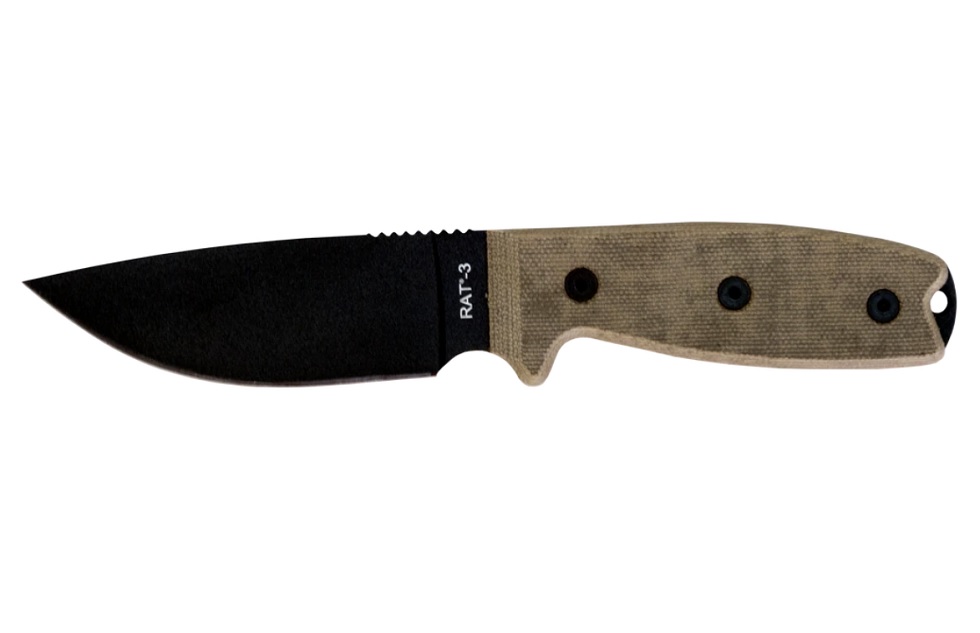
Ontario RAT knives are true American classics. All are made of 1075 carbon steel and are fully US-made. The RAT-3 with a blade just under 4″ is a good example of how to make a versatile solid knife in the USA at under $100. The 1075 carbon steel is tough, sharpens easily, and thanks to coating the knife it’s well protected against corrosion. The RAT series is very popular as “adventure knives” among survivalists and bushcrafters, and there’s a reason for that – these knives are true cutting tools. Nothing fancy – all function.
Helle Utvaer ($184)

This list wouldn’t be complete without Utvaer, one of my favorite fixed blades of all time. Sandvik 12C27 stainless steel is easy to sharpen and keeps a razor edge really well. It’s quite compact with a 4.2″ blade, but also big enough for most outdoor uses. However, the real secret of this knife is in the handle – it must be the most comfortable handle ever! And with the curly Nordic Birch slabs it looks very attractive too. If you enjoy classic Scandinavian knives but still prefer stainless blade material and a modern anatomical handle shape, the Helle Utvaer should be on your shortlist. It’s been designed by well-known Danish designer Jesper Voxnaes… no wonder it’s such a handsome knife.
Spartan Blades Harsey Tactical Trout ($350)

Premium materials, top-tier manufacturing quality, and legendary designer Bill Harsey – it’s a recipe for an awesome personal EDC fixed blade. It’s good not just for outdoor use but also as a backup for LEO or tactical operators. One of the very few real ‘does it all’ knives. It’s a tough knife, with a strong ‘abuse-proof’ cutting edge, but it’s still more than capable for outdoor use. The Tactical Trout’s fine tip is great for precise jobs if needed. It looks as good as a production knife can only look. And it’s available with multiple carry options depending on your preference or need. Any drawbacks? Well, top-tier materials and manufacturing can’t be cheap as you can imagine. I’ve been using mine for more than three seasons now and it has never let me down.
L.T. Wright Genesis ($191)

This is a knife for experienced users. A2 carbon tool steel could rust, so it’s not for everyone. But if you’re able to take proper care of it, A2 tool steel will reward you with a fantastic mix of sharpness, toughness, aggressiveness of the edge, and ease of sharpening. The 4.25″ blade makes the Genesis a very good general use knife. The micarta handle in a so-called broomstick shape makes it versatile and comfortable for virtually any outdoor work. If you have experience with carbon steel, the Genesis could be a very good choice for your next outdoor outing. It’s available with both a Scandi grind (pictured) and a full flat grind. I prefer the Scandinavian grind but you can’t go wrong with either one.
Benchmade Leuku ($162)

Another Scandi-inspired knife, this time in super-tough CPM 3V steel with a thermoplastic Santoprene handle. It’s a knife I’d not be afraid to baton through 4-inch firewood to start a fire. But it can also clean fish, whittle some tent stakes, etc. A modern take on a time-proven outdoorsman’s oriented Scandinavian Leuku knife – tougher than a puukko and extremely versatile. A leather sheath with a ferrocerium rod tube and dangler loop completes the package. It’s a very capable knife, which would be a perfect companion for any outdoorsman. Highly recommended.
TRC This Is Freedom ($330)

It’s a true classic – straight blade, full flat grind, fluted micarta handle slabs, leather sheath. With a really thin edge and needle-sharp tip, this knife cuts flawlessly and with zero effort – it’s like a lightsabre. However, due to the thinner profile and more delicate edge, it requires some care and experience. I’d also not baton this knife if you’re not really experienced with batoning. It’s easily one of my best performing pound-for-pound fixed blades ever! It’s super light for its size and it excels at cutting, whittling, and other fine bushcraft jobs. And it rocks in a camp kitchen too.
Mora Garberg ($99)

It’s an outdoorsman’s machine, which could be yours for under $100. A full-tang Mora, made of very good Sandvik 14C28N steel, with a Scandi grind, tough tip, and 90-degree sharp spine. I know, it’s one of the most expensive Mora knives, but still, $99 (or less) is a totally reasonable price for this model. You get a lot of performance for the money. The Garberg is recommended by top survivalists and bushcrafters around the world. It’s also seriously tough – it’d take a lot of intentional abuse to break the Mora Garberg. It’s available with black DLC-coated carbon steel as well (some bushcrafters prefer carbon steel or flint-stone fire starting capabilities). And it comes with a variety of sheath systems. It’s a truly well-balanced package.
ESEE-6 ($118.59)
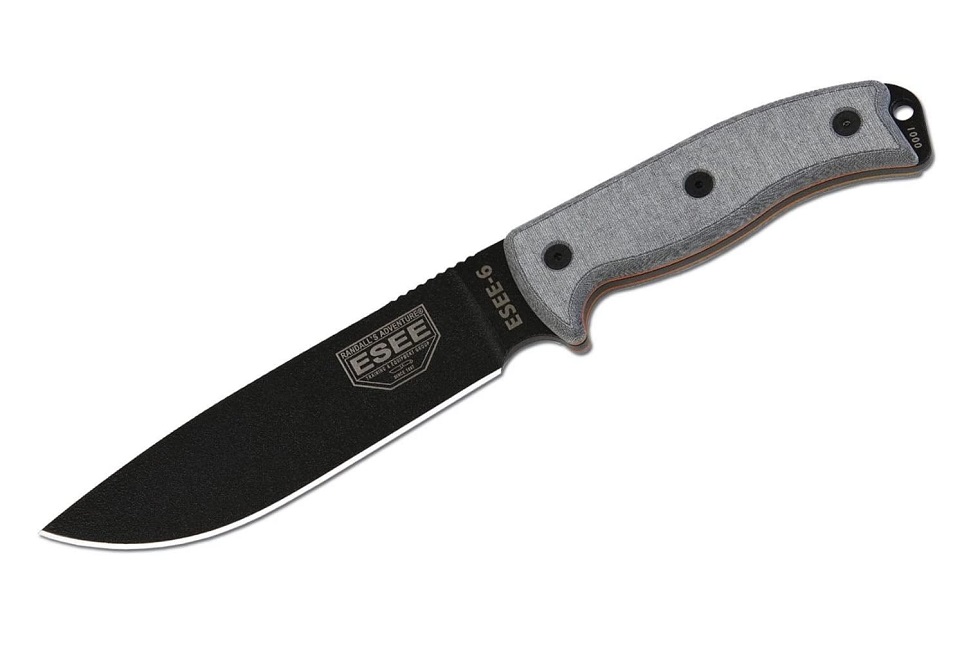
If you ask a non-knife person to draw a knife, he or she would certainly draw something that resembles this knife. With a 6.5-inch blade made of 1095 carbon steel, a drop point shape, and a full flat grind this thing is a classic representation of a camp knife. I like the micarta handle too, which provides not only a positive grip but also durability over years of use. ESEE offers this knife with multiple carry options, so you can tailor the package to your needs. It’s a US-made knife with a great reputation among outdoor enthusiasts. It can cut, it can chop, it can be used and abused. 1095 carbon steel is very forgiving, easy to sharpen (like most carbon steels), and takes a razor edge without too much ado.
This knife would be a perfect “first” quality camp knife, but it can also be your last knife purchase as it’s made to last a lifetime. It might be a little bit boring to some, but that’s often an indication of a perfect form following function… and that’s exactly the case with the ESEE-6.
Sliwkosky Kephart (custom, starts at $350)

When I started this article I decided to open your eyes to one more option in knives – custom made. And for serious around-the-camp use, this is one of my favorite blades. Sliwkosky is a talented knifemaker from Poland and his specialty is modern takes on classic outdoor fixed blades. I discussed all aspects of this project with him and this is the result. It’s a full-size Kephart-style knife in Sleipner semi-stainless steel (known also for its superior toughness) with a micarta handle and Kydex sheath made by me.
This combo can do any camp job – whittling, chopping, cutting, food prep, etc. But the real beauty of a custom knife is that you can tell the maker what you need and it’s up to the creator to propose, make, and deliver to your hands the best tool for your needs. Of course, you usually pay a bit more than for a factory knife, but… there’s no contest! This custom Kephart will outperform any production Kephart-style knife I’ve seen. It’s also not too heavy for its size, so could be carried as a backpacking tool if you don’t mind some extra weight. For a prolonged trip to the real wilderness like Alaska or Taiga, I’d certainly take something like this as my main knife plus a smaller backup of course.
TRC Apocalypse ($469)

The TRC Apocalypse is a REAL BEAST. This knife will chop and split wood like a hatchet, but it still cuts surprisingly well. The size and heft make it an awesome survival or camp knife. I used mine for all kinds of crazy work last summer and I can tell you, it’s a big bad knife that can do anything around a camp or a backcountry cabin. It’d make a terrific overlanding knife too.
Elmax steel is a top-of-the-range stainless blade material (so good also for humid areas), while the micarta handle will last forever and also considerably enhances grip strength vs other materials – even when wet. This knife feels remarkably good in hand. It’s a cutting machine – you can use it really hard without being afraid of any possible damage to the blade. On top of that, it’s also a rather attractive-looking design but still not ‘overcooked’ in any way. TRC offers both leather and Kydex sheaths for it, whatever you prefer. This is my #1 overlanding camp knife now.





 Carry Awards
Carry Awards Insights
Insights Liking
Liking Projects
Projects Interviews
Interviews
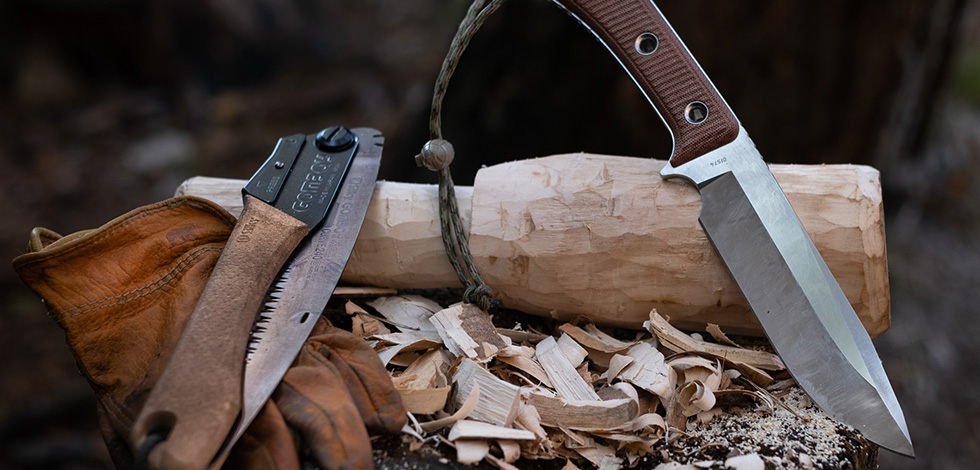



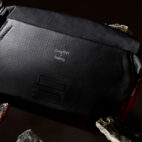
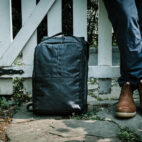
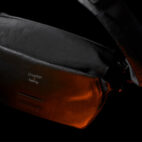





One thought on “Why You Should Get a Fixed Blade for Your Next Adventure”
Comments are closed.